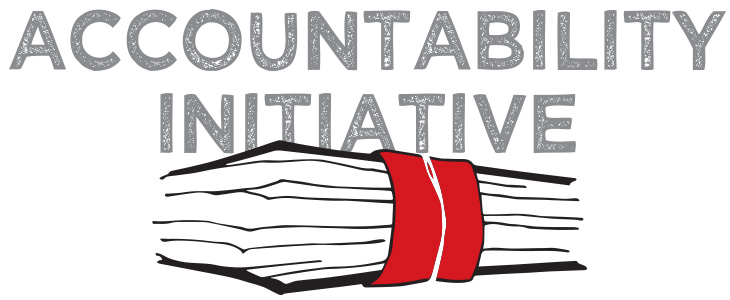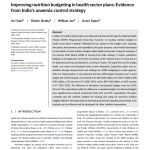
Loopholes: Land ownership and the Bhoomi Project
17 October 2012
The real estate sector in India has a large impact on its economic growth story, having ‘added over 1 lakh crore of 2.58 lakh crore in 2010-11 to just Delhi’s GDP.1 According to a 2011 study conducted by KPMG, 50% of the respondents were of the view that the real estate and construction sector are the most corrupt (you can view the study here). The underlying competition in real estate and land has in some ways led to fascinating, and disturbing, state-business relationships. It is not just about the actions of the business elite and their political right hand men or vice-versa, instead, there is now an hazy stratification within this sector – Businesses and the government at the top (with a two way relationship where licenses and large sums of money are), middle level real estate agents in the centre and farmers/small businesses/ordinary citizens at the bottom. These relationships depend on the undeniable value of land as a resource, as private property and as cultural heritage – this value has not only altered over time, but has also presented a curious problem of access and ownership. This blog broadly look at the obscure nature of problems around land as well as land acquisition, and presents some thoughts on a successful land records project and the large gaps in it.
As discussed by Professor RS Deshpande in this article, the problems of land administration has gained momentum in land policy discussions. The emphasis given to more specific, almost logistical, issues within land policy (including tenancy, ownership for the marginalized and minority communities and land records), however, has been intermittent. Post Indian Independence, the main phases of land policy comprise of:
| Year | Type of land reform |
| 1950- 71 | Abolition of the intermediaries, tenancy reform, and the redistribution of land using land ceilings |
| 1972-85 | Bringing uncultivated land under cultivation |
| 1985 – 95 | Attention towards water and soil conservation through the Watershed Development, Drought-Prone Area Development (DPAP) and Desert-Area Development Programmes (DADP) |
| 1995 | Continued with land legislation and efforts to improve land revenue administration and, in particular, clarity in documenting land records |
| 2005 onwards | Land Acquisition, Land records |
Source: ftp://ftp.fao.org/docrep/fao/006/y5026e/y5026e00.pdf
The acquisition of land as well as transfer/sale of land proposes different policy problems to the rural and urban landscape in India. For example, high land prices have created a skewed dynamic, where realtors are now moving beyond urban centres to buy agricultural land for commercial and non-cultivation purposes. The procedure is easy; you only have to show that you are an ‘agriculturalist’ or a family member of a farmer. Or in some cases, realtors buy ‘uncultivable’ land and after attaining status as a farmer buy large cultivable land for commercial purposes. The complications of transferring land titles, checking to see if farmers have been rehabilitated or checking to see if the transaction was legal are often sidelined. Recent scams show the various methods of infiltrating the loopholes of land and property ownership in urban centres2. To give a few examples – high profile politicians favouring particular businesses in getting land at lower prices (or vice versa), using front companies to invest in projects and lastly, a new age phenomenon of re-routing black money to Indian shores under the FDI bandwagon. The large rural to urban migration has given rise to further problems with respect to land. According to a 2010 study conducted by McKinsey Global Institute, “projections show India’s urban population soaring from 340 million in 2008 to 590 million in 2030”3 . In order to handle the growing urban slums, encroachment of public land and dubious sale of land and Benami transactions, there is now a greater need for pressure on the government to build adequate policy checks and balances.
A revolutionizing step in terms of making transactions relating to the sale, transfer and ownership of land was the Bhoomi Project. Under Rajeev Chawla, the project began as an effort to digitize land records in Karnataka (back in 2001) to bring down corrupt deals and reduce the power of the middleman. It presents a new focus on using e-governance to ensure accountability and was considered a best practice model of e-governance by the World Bank. It aims to homogenize and structure recordings, and till date, the project has computerized around 20 million records of land ownership of 6.7 million farmers in the state- you can see more details on their website here. This project has now become a model for other states (Kerala and Andhra Pradesh have already started implementing the project) in the country. For the digitization process, the farmer also has to create a ‘Pahani’/ RTC (revenue record that contains the owner’s details- area, water rate, soil type, nature of possession, liabilities, tenancy etc). There are 177 Taluk offices (State Public Information Office) where the farmers can put in their ID numbers into the touch screen kiosk and get their information. They can also print out a copy of the record for Rs 15. There is also a fast track procedure for the ‘Mutation’ process (for selling land, transfer of land)
A paper on increasing acceptance of social accountability in public institutions4 argues that ICT for e-governance can change citizen empowerment processes and communication. However, there are still some unclear points in terms of the reliability of this type of project
1. Collecting the data– The paper records that the farmers have may not be updated. The onus lies on the Taluka officers to sift through this information. The number of officers may not be able to handle all the information they are receiving – In the old system, each Village Accountant handled 3-4 villages (back in 2006, there were about 9000 VA’s)5
2. Segregating the paperwork– The main question after gathering information is whether the Revenue Inspector can validate the information received. Once the records are digitized, the farmers (if illiterate or unaware) are still dependent on the VA’s to act as the middlemen. This can perpetuate unnecessary waiting, and even false information.6
3. Ownership– Since this is not just land, but often times, contested land, for both agricultural and urban use7, there are now growing stories of threat against smaller land occupiers (both land owners and those on leases) from very powerful agents and land developers.
4. Entering and accessing the data: The level of transparency within the records relies on the honesty of the Taluka heads at the kiosks and Taluk offices. An additional problem is that of the data becoming more expensive for small farmers to access their information (Rs 15 per record).
5. Gaping holes: How can such a program ensure that large businesses and agents do not use political/ money power or muscle power to deter small farmers from selling land under duress, for making sure that information is not falsified during the computerization process? We have been reading continuously about the various land scams that have been taking place across the country (here, here and here). How can we ensure that the farmer at the bottom isn’t being taken advantage of?
The intense nexus between information giving, politics and business, civil society and governance is only partly visible, much to the dismay of social science researchers. Another blog post on the growth of the real estate giants under particular political parties seems likely. Watch this space.
1 http://articles.economictimes.indiatimes.com/2011-09-30/news/30228914_1_agricultural-land-farm-land-land-for-non-agricultural-purposes
2 http://www.firstpost.com/economy/how-the-politician-builder-nexus-really-works-490938.html?utm_source=moneycontrol.com&utm_medium=RHS-Widget
3 http://www.mckinsey.com/insights/mgi/research/urbanization/urban_awakening_in_india. April 2010
4 http://papers.ssrn.com/sol3/papers.cfm?abstract_id=2146403 Bhavya Shroff, IIM India
5 http://egovreach.in/uploads/demo/casestudy/Bhoomi.pdf
6 http://papers.ssrn.com/sol3/papers.cfm?abstract_id=2146403 Bhavya Shroff, IIM India
7 Bhoomi: ‘E-Governance’, Or, An Anti-Politics Machine Necessary to Globalize Bangalore? 2007.http://casumm.files.wordpress.com/2008/09/bhoomi-e-governance.pdf





